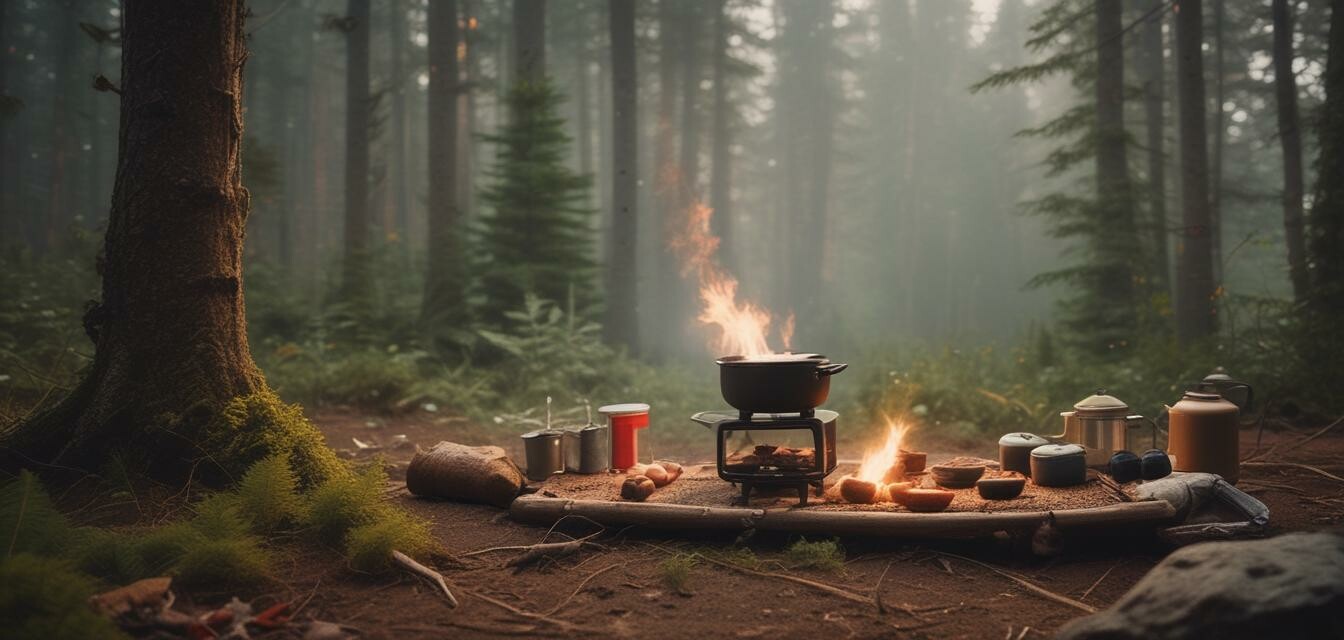
As an Amazon Associate, I earn from any qualifying purchases, at No Extra Cost to You.
New Cooking Techniques for Backpackers
Key Takeaways
- Explore innovative one-pan meals that simplify cooking and clean-up.
- Discover efficient wood-fired cooking methods for flavorful meals.
- Utilize portable tools and gear to enhance your cooking experience.
- Learn tips for meal prepping to save time and space while backpacking.
Backpacking is a thrilling adventure that allows you to immerse yourself in nature, but it doesn't mean you have to sacrifice delicious meals. In fact, with the right cooking techniques, you can whip up gourmet dishes in the wild! This article will highlight innovative cooking techniques tailored for backpackers, focusing on one-pan meals and efficient wood-fired cooking. You might be surprised at how easy it can be to enjoy tasty meals while exploring the great outdoors!
One-pan meals: Simplifying outdoor cooking
One-pan meals are the cornerstone of efficient cooking for backpackers. These meals not only make preparation easier but also reduce clean-up time, allowing you to spend more moments enjoying nature. Here are some exciting one-pan cooking ideas:
- Stir-fries: Quick and vibrant, stir-fries are perfect for incorporating fresh vegetables and proteins.
- Frittatas: A versatile option that allows you to use any leftovers with eggs for a fulfilling meal.
- Curry: Packed with flavor, a one-pot curry can be made with dehydrated ingredients and enjoyed over rice or bread.
Recipe ideas for one-pan meals
| Meal Type | Main Ingredients | Cooking Method |
|---|---|---|
| Vegetable Stir-fry | Mixed greens, nuts, soy sauce | Cook in a frying pan with a little oil |
| Egg and Veggie Frittata | Eggs, bell peppers, cheese | Cook in a skillet until set |
| Chickpea Curry | Chickpeas, coconut milk, curry paste | Simmer in a pot over heat |
Efficient wood-fired cooking: Embrace outdoor flavors
Nothing beats the flavor of food cooked over an open flame. Wood-fired cooking not only enhances the taste but also offers a uniquely rustic experience. Here are some techniques for cooking with wood:
- Use of a portable wood stove: Lightweight and efficient, these stoves can heat quickly using minimal wood.
- Cooking in a Dutch oven: Ideal for stews, soups, or baking bread, Dutch ovens retain heat remarkably well.
- Skewering meals: Thread meats and vegetables on skewers for a fun and easy way to cook over the fire.
Advantages of wood-fired cooking
| Advantage | Description |
|---|---|
| Flavor | Smoky and authentic taste that enhances meals. |
| Resourcefulness | Utilizes natural materials for cooking, reducing waste. |
| Fun and Engaging | Participates in an enjoyable cooking process. |
Portable cooking gear for backpackers
To maximize your cooking efficiency on the trail, investing in the right portable tools is essential. Below is a list of must-have cooking gear:
- Lightweight cooking pots: Easy to pack and heat quickly.
- Compact utensils: Look for multi-functional tools to save space.
- Portable stove: Choose between propane, butane, or wood-fired options depending on your preference.
Meal prepping for backpacking
Preparing your meals ahead of time can make a substantial difference in your backpacking experience. Here are some tips for effective meal prepping:
- Dehydrate ingredients: Bring lightweight dehydrated foods like fruits, vegetables, and grains.
- Pack all-in-one meals: Combine your ingredients into single servings, ready to cook.
- Use resealable bags: To minimize space and keep your food fresh.
Tips for beginners
- Experiment with flavors to discover your preferences.
- Practice cooking at home with similar gear before hitting the trails.
- Stay safe by following fire regulations and cooking safely in designated areas.
Conclusion
Backpacking and cooking can go hand-in-hand, offering you the chance to enjoy satisfying meals in nature. By implementing innovative one-pan meals and exploring efficient wood-fired cooking techniques, you can elevate your dining experience on the trails. Combine this with the right gear and meal prep methods, and you'll be ready for your next outdoor adventure!
Pros
- Enhances your outdoor cooking skills.
- Encourages healthy and satisfying meals in nature.
- Fun and engaging way to enjoy group meals.
Cons
- Requires practice and experimentation.
- Some techniques may need extra gear.
- Cooking time might be longer than at home.
For more insights into backpacking gear and techniques, check out our sections on Food - Cooking Gear, Buying Guides, and Backpacking Trends.